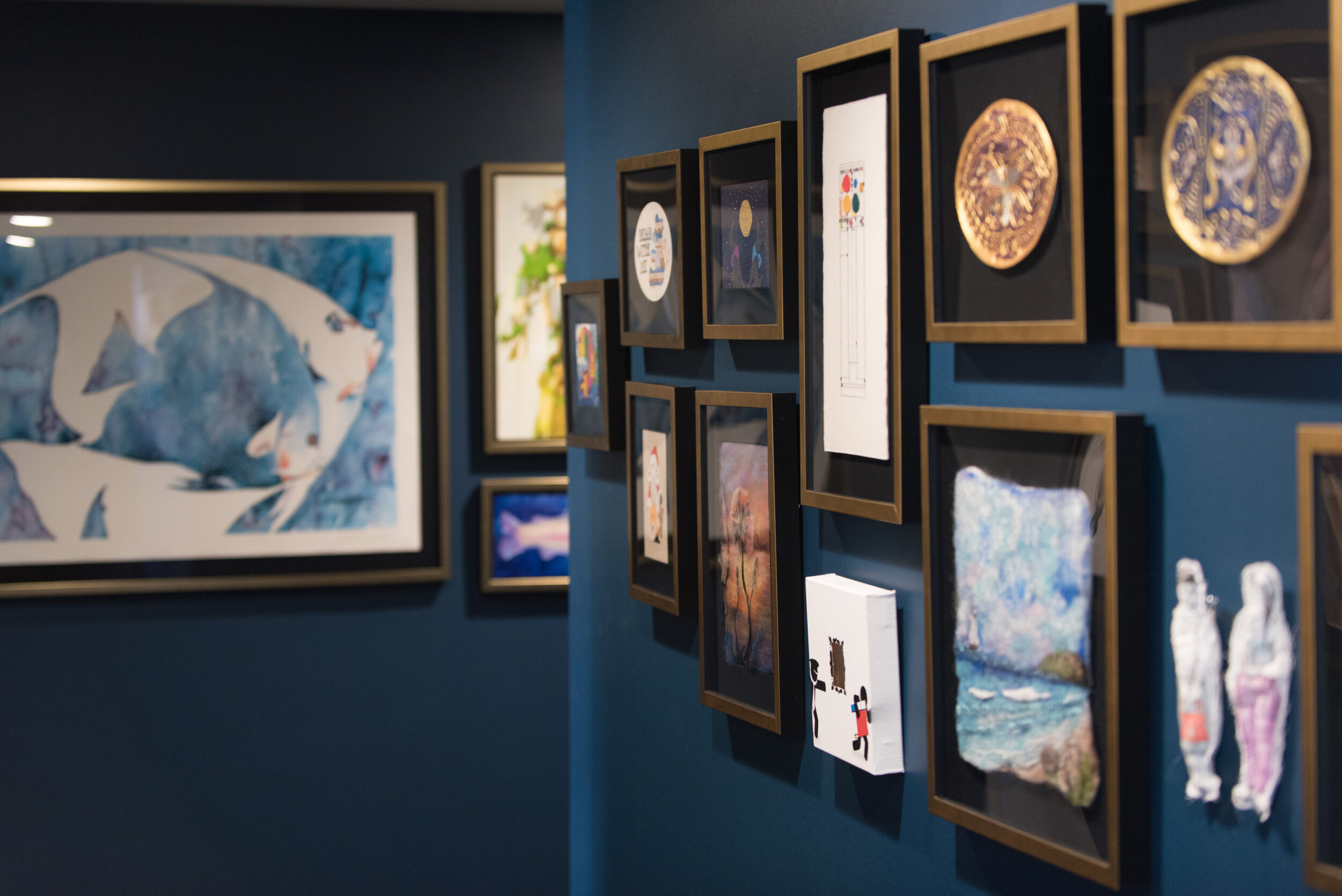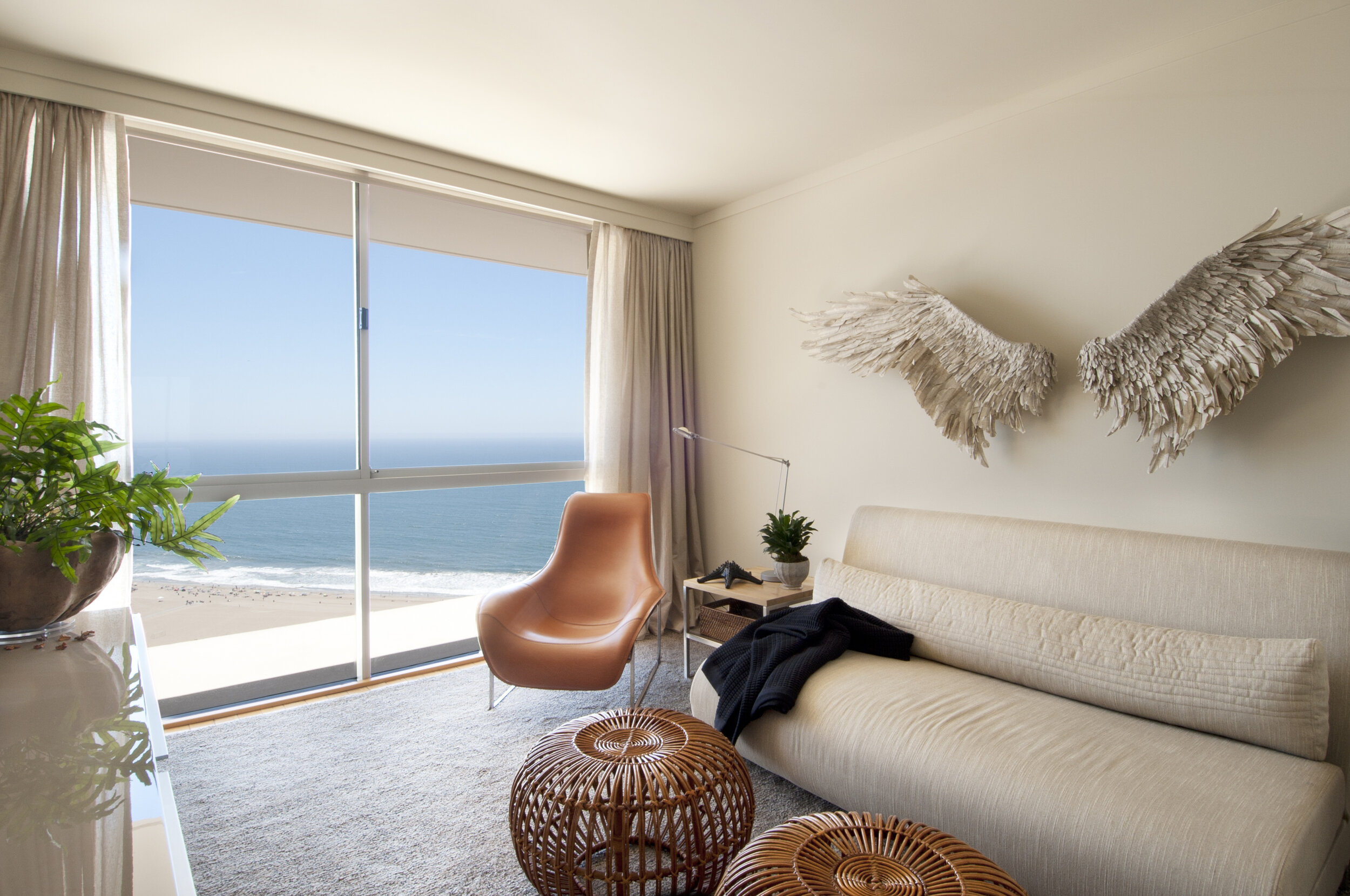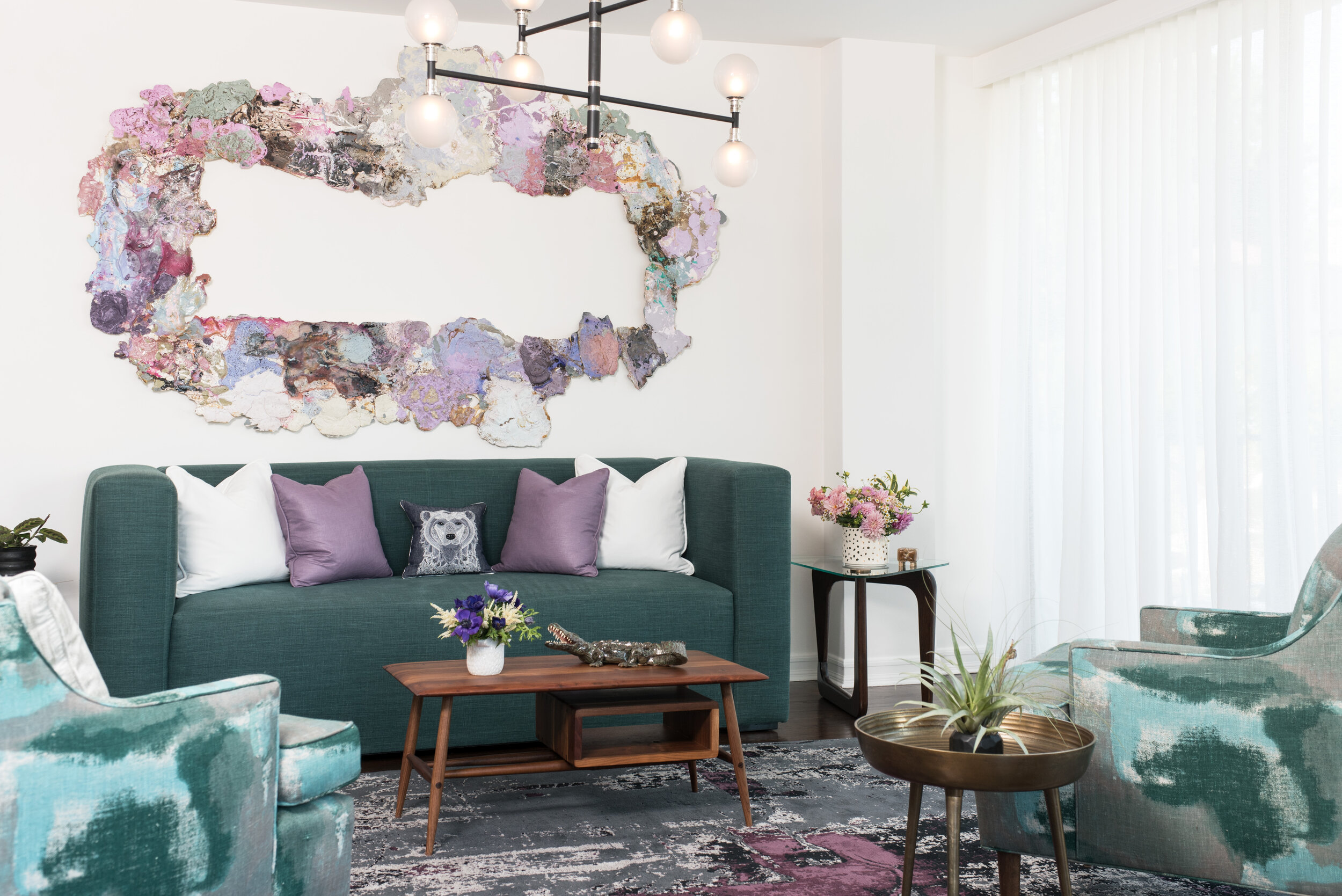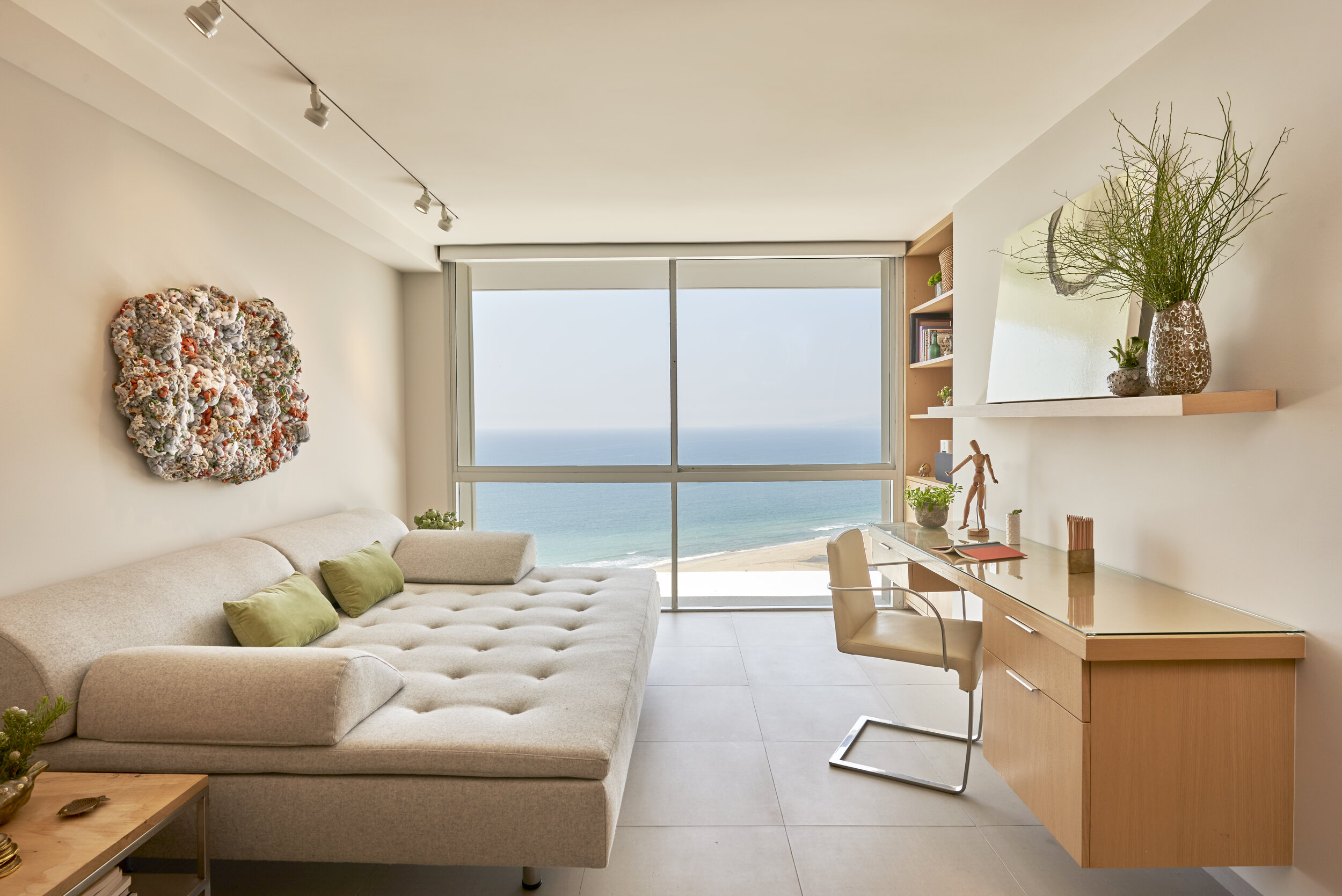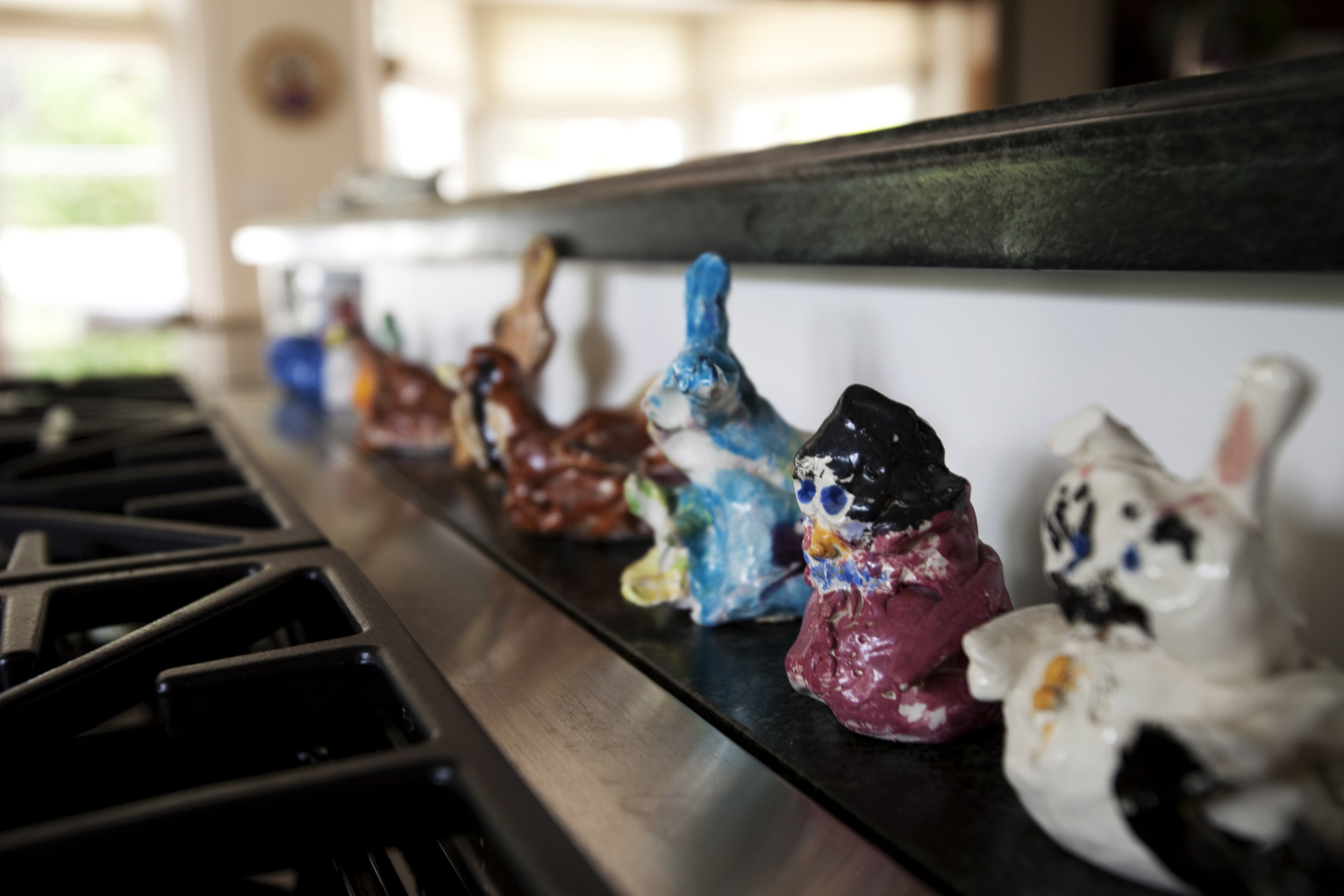Curating a Mindful Experience: Focusing on Art at Home
/Interior design by Sarah Barnard, Artwork by Renae Barnard.
Selecting and arranging artwork in a home can be a gratifying process for all involved. While science is only beginning to explore the emotional effects and benefits of art, people have been driven to produce and seek artwork throughout human existence. In a study at the University College London, researchers found that looking at beautiful artwork activates pleasure centers in their brain and elicits a neurological response similar to falling in love.
Sarah Barnard helped this client curate and collect an extensive collection of feminist artworks.
It only makes sense that we should turn to artwork to influence emotional experiences in home design. As an interior designer with a fine art background, I recognize art's incredible power to enhance wellbeing in design. Commissioning artworks or objects by local artisans can be an incredibly rewarding way to elevate a client's home, and invest in the local creative community.
A diverse collection of local and international artists.
When selecting artwork for a family or group, it's key to ensure that everyone has a voice. Inviting individuals to have control over their domains and some level of veto power in shared spaces can aid in decision making in the home design process. Having a say over designated personal spaces guarantees that everyone is getting something they love, at least in one part of the home. In common areas, everyone should have a choice, and this is where having a designer with additional resources helps. I have developed relationships with many unique and talented artists throughout my career, which has helped me find and commission beautiful and obscure pieces.
Interior design by Sarah Barnard, Artwork by Susan Hannon.
When approaching all home design elements, it's essential to consider a room's use and intentions before purchasing or commissioning artwork. For family rooms that are often bustling, high traffic spaces, bold, energetic works of art can invigorate a room and inspire conversation. Large scale works can provide a welcome alternative to a television, and offer a focal point in spaces with many moving parts and multiple functions. Shared areas of congregation are ideal for bold abstract pieces or narrative works that inspire investigation and conversation.
Interior design by Sarah Barnard, Artwork by Kevin Moore.
In a recent home remodel for a family residence, Scalar Field by Kevin Moore hangs above a breakfast nook composed of a custom dining sofa and handmade walnut dining table. The warm colors and textures of the pieces play off each other, for an inviting eating space that encourages both quiet daydreaming and lively discussion. The piece's unique, geometric shape adds architectural interest to the corner, expanding the room and adding to the area's significance in the home. The nook encourages a mindful dining experience, inviting the owner and guests to pause and enjoy the beauty and serotonin-boosting effects of an in-house art display.
Interior design by Sarah Barnard, Artwork by Reid Winfrey.
A small, sleek bar becomes increasingly expansive with a dreamy painting of a surfer by artist Reid Winfrey in a beachy bachelor pad. In areas without windows, artworks with natural themes or escapist qualities are often beautiful alternatives to a view. This piece reflects the homeowner's interests and passions, connecting them to natural locations and activities they love, and offering insight into their personality to guests. Creating intentionality in small areas of the house can significantly affect overall mood and pacing, offering small, meditative opportunities. Art can be a useful tool to train the mind to slow down and be appreciative of surroundings and experiences.
Interior design by Sarah Barnard, Artwork by Renae Barnard.
Collecting artwork invites a level of personal connection and customization that can create a deep emotional experience of the home. A large wall sculpture by Renae Barnard entitled Aggregate Liberty compliments custom furniture in a residential redesign. Colors and textures in the artwork and the living room mimic each other, softening the boundaries of the artwork and the residence for an immersive and transcendent experience. Quiet rooms for focus may benefit from works that feel calm and soothing. Natural colors and themes help decompress, and textile pieces, in particular, can bring an added layer of comfort and calm.
Interior design by Sarah Barnard, Artwork by Renae Barnard + Ruben Vincent.
For a home office redesign, our studio commissioned a sculptural piece by artist Renae Barnard for artwork that referenced the home's natural surroundings. As an alternative to the already prominent ocean view, our studio saught to connect to nearby natural elements that required more careful observation. Ultimately, the studio found inspiration in the finches visiting the olive trees on the homeowner's patio. Noticing them requires careful consideration of the surroundings, inviting the homeowner and guests to become increasingly mindful. The finches' flight to the skyrise penthouse in the clouds inspired the final form of the fiber sculpture Cumulous.
Interior design by Sarah Barnard, Artwork by Karrie Ross.
Fanciful imagery in muted earth tones creates an airy and uplifting mood for rest. Displaying artwork near a bed may contribute to peaceful habits before sleep, and provides mind-quieting observational opportunities. A watercolor and mixed media piece by artist Karrie Ross is an atmospheric addition to a residential bedroom redesign. The piece's overall effect is peaceful, guiding the viewer away from chaotic thoughts or visuals before bedtime. The details within the artwork hold the viewer's attention and offer avenues for thoughtful examination, pulling focus away from the stresses and memories of the day. Using the emotional experience of a work of art to guide a room's mood can provide ample opportunities to shape home design support and uplift its residents.
Interior design by Sarah Barnard, Artwork by Brian Johnson.
Commissioning or curating artwork is ultimately about inviting positive emotions and experiences into the home. A piece does not need to mirror a pre-existing aesthetic to be the perfect fit for a client's home if it inspires pleasure and supports wellbeing. Incorporating artwork into living spaces can be an enriching process, inviting time to reflect, think, and appreciate the beauty of daily life.
Interior design by Sarah Barnard.
Sarah Barnard, WELL AP and LEED AP, designs healthy, happy, personalized spaces that connect deeply to nature and art. Barnard has been featured in publications internationally and was named a "Ones to Watch Scholar" by the American Society of Interior Designers. Empathy and mindfulness are the foundation of her practice creating healing, supportive environments that enhance life.
This image used with permission provided by Gregory Firlotte @ LA Design Magazine
This article was written by Sarah Barnard for Issue 2 of LA Design Magazine, Celebrating Design and the Arts. Published by the American Society of Interior Designers, Los Angeles, CA.




